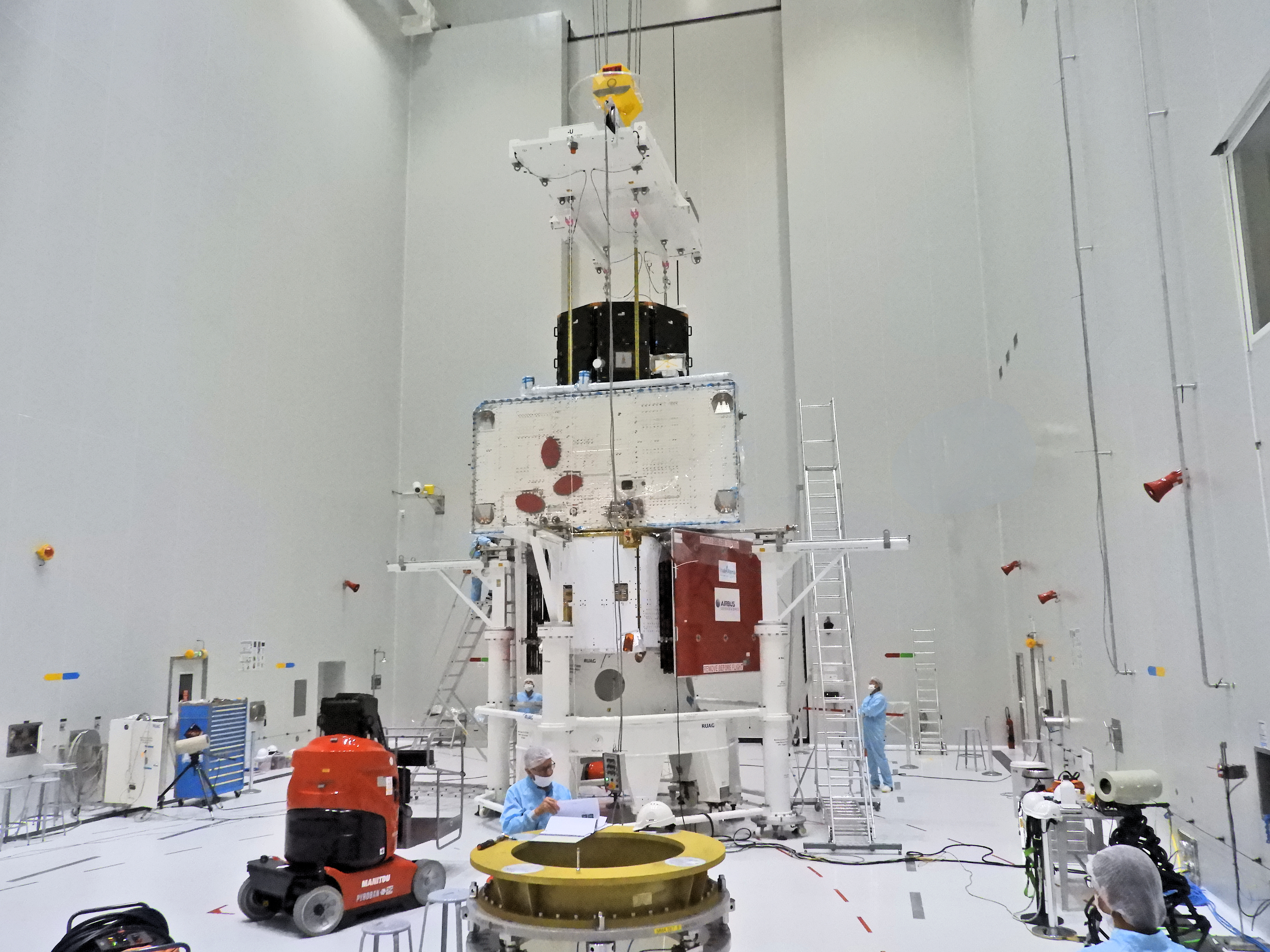BepiColombo, a joint mission to Mercury between the European Space Agency and the Japanese Aerospace Exploration Agency, is almost ready to launch. Here at the Science Museum, we have the 8-metre-tall full-sized Structural Thermal Model (STM) on display in Mission to Mercury: BepiColombo that was used in the testing phases to see if the spacecraft would be able to survive its perilous 7-year journey to the closest planet to the Sun; and ESA and JAXA teams have spent the last 7 months getting ready to launch the actual spacecraft.
Around 1200 engineers and scientists from 16 different countries have worked on this mission since 2000, and on Saturday 20 October it will finally lift off on an Ariane 5 rocket from its launch site in French Guiana.
ESA’s BepiColombo Project Scientist Johannes Benkhoff, gives us a run-down of the latest preparations for the launch.
At the end of April we started to ship our spacecraft and the support equipment from ESA’s technical facility (ESTEC) in the Netherlands, to Kourou in French Guiana, Europe’s Spaceport from where the mission will be launched to Mercury.

Since then we have been preparing the spacecraft for launch. This included testing the health and functioning of all the equipment after the shipment, performing battery capacity tests, undertaking alignment measurements on ESA’s two spacecraft units MPO (Mercury Planetary Orbiter) and MTM (Mercury Transfer Module) and loading of final software versions for onboard control and of the solid state mass memory. We also loaded 581 kg of Xenon into the MTM tanks and Helium into MPO, and pressurised the tanks. We have performed the solar array integration and testing on MTM and MPO, and much more. In parallel, our Japanese colleagues performed similar tests and tasks on their spacecraft, MMO (Mercury Magnetospheric Orbiter). After a public renaming competition, they now call their spacecraft ‘Mio’.
Important checkpoints were passed at the end of August: the so-called Launch Vehicle Flight Readiness Review and Fuelling Readiness Review. These important reviews represent further key milestone in our launch campaign, bringing us to the final stages of our launch preparations, while in the longer term enabling the journey and operations at Mercury. These reviews also confirmed that everything was green for launch, so we could start fuelling the spacecraft tanks with the much more hazardous fuels.

After fuelling, the final integration of the multi-layer insulation blanket, MLI, on MPO and MTM took place, along with adding the ‘fins’ to MPO’s radiator. During its two-year mission around Mercury, the BepiColombo will have to sustain a heat flux equivalent to that of a pizza oven, with external temperatures at about 450°C.
Therefore, the spacecraft is wrapped in specially-designed high temperature multi-layer insulation including two layers of ceramic-based fabric separated by an insulating foam and multiple layers of titanium foils, called MLI. The radiator itself is protected from the reflected heat from Mercury by a titanium window blind, called ‘fins’.
Then the two science modules and the transfer module were arranged in their launch configuration for the first time in over a year. The last time was when we performed the tests on the complete stack at ESTEC.

In order to reduce the quantity of propellant carried by the probe BepiColombo will perform multiple planetary flyby manoeuvres before entering orbit around Mercury: one at Earth, two at Venus and six at Mercury. These manoeuvres require to fly several orbits around the Sun, each lasting several months. In the end, from launch to Mercury orbital injection, this will take about 7 years
Now the countdown clock is really ticking. Our spacecraft are ready to be launched. They have been mounted on top of the Ariane 5 rocket. Next the fairing will be closed. Early next week the rocket with BepiColombo on top will be moved to the launch pad and then on Saturday morning, 19 Oct – 01:45 UTC, the last seconds of the countdown clock will run down. Lift-off of ESA’s most complex planetary mission ever will be on route to our most mysterious planet, Mercury.